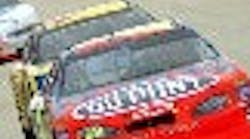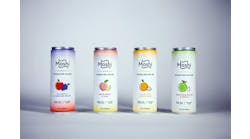They line up at the gate, the shot is fired and they're off … to great anticipation. In racing parlance, there often is one horse that sets the pace, the leader of the pack. But there is always the danger the pacesetter will leave the gate with a bang, but later trip, run into unexpected problems or simply run out of gas. It's uncertainty that makes the race interesting.
It's not so very different when following new consumer packaged goods (CPG) product launches. Information Resources Inc. (IRI), Chicago, market data collector and a leading provider of enterprise market solutions, has tracked and ranked the most successful new brands for 11 years. IRI calls the cream of this crop Pacesetters.
Pacesetters, as IRI defines them, are products launched between February of one year and January of the next that reach two milestones: 30 percent national distribution and retail sales of at least $7.5 million. Once those milestones are reached, IRI begins tracking them in earnest over the next 12 months to determine the most successful new products in their first year of true "national" sales.
IRI tracks first-year retail sales at food stores, drug stores and mass merchandisers (excluding Wal-Mart). Only 20 percent of new products reach $7.5 million or more, and less than 1 percent reach annual sales of $100 million. IRI tracked 136 Pacesetters in 2005 to arrive at this top 10 list and is following 87 Pacesetters-to-be in 2006.
Early each year, IRI's new-product guru Valerie Skala Walker, vice president of analytic product management, identifies the meteoric Pacesetters, analyzes why they have led the pack and speculates on up-and-comers for the following year. She factors in demographics, including ethnic origins and generations, and other market forces. Somewhere in all that data lie some trends.
"The difference between a trend and a fad is how long it lasts," says Walker. "We're talking about the same trends this year as last year, but what's different is how those trends are evolving and playing out in the marketplace. For example, consumers keep raising the bar on the definition of convenience, and manufacturers keep responding."
Diets and new flavors
Obesity was the No. 1 hot button in 2005. So it should be no surprise that leading the food and beverage categories is Unilever USA's Slim-Fast Optima diet system, a line of 15 SKUs that includes smoothies, muffin bars, shakes and snacks, and contains 55 percent less sugar than the Original Slim-Fast products. They provide approximately one-third of many key daily nutrition requirements in a convenient form and are designed to make dieters feel full. The diet comes with personalized planning and advice from a dietitian. The line also includes healthy and nutritious children's snacks.
On that same theme, Kraft Foods apparently was the first food marketer to introduce 100-calorie packs. "Nabisco 100 Calorie Packs provide portion- and calorie-control through single-serve packages filled with lower-fat ‘crisps' versions of their popular cookie and cracker brands, such as Oreo and Cheese Nips," says Walker. She says they meet evolving consumer demand for foods that meet higher nutritional standards, taste better than the early versions of "better-for-you" products and are more convenient.
Because the list is, in some cases, more than a year old, it carries some products that already have been pulled by their manufacturers or at least already have reached their twilight. "While the low-carbohydrate fad is considered by most to be over, some of the mid-year 2004 launches, such as Kraft's Carb Well line, were large enough to make the pacesetter list," Walker points out. Ditto for Coca-Cola's C2 mid-calorie soda.
That brings up another key point: If you don't think advertising is important, think again. Big, marketing-heavy companies such as Kraft and Coca-Cola throw a lot of money at new products in hopes of stretching hits into home runs. Walker in the past has tracked products that appeared to have more "measured media" advertising spending than trackable sales - but that included book rate (not discounted) advertising on the one hand and did not include sales in Wal-Mart and nontraditional channels on the other. It's hard to say if any new product's total marketing budget ever exceeded its sales, she says.
"It's notable that the brands spend a lot on advertising to build awareness and desire to try the product," says Walker. "In fact, this year [the 2004-2005 launches], the average Top 10 brand spent more than $25 million on TV/radio/print advertising in year-one."
In meal solutions, two multi-serving frozen dinner products made the list. "Unilever's Bertolli brand launched Dinner for Two, a line of chef-inspired Italian dinners that go from freezer to skillet to table in 10 minutes," she says. "ConAgra rolled out Banquet Crock Pot Classics, which are convenient in two ways: They take just five minutes in the morning to start the meal, and they are ready to eat in the evening."
Crock-Pot Classics was a great opportunity for Con-Agra because slow-cooking is on the rise; in fact, more than 80 percent of American households own a slow cooker, and 20 percent of families use it on a weekly basis, according to an NFO World Group Appliance Study. That's a lot of slow-cooked meals each year.
Walker notes there are several commonalities every year among the Top 10 Pacesetters. "They tend to be in large categories with high household penetration and purchase frequency," she explains. "They also tend to be extensions of well-known brands from leading CPG manufacturers. This year, Bertolli was new to frozen dinners, but the brand is known to Italian food lovers via the olive oil category. Every other brand was well known in its category."
Another commonality and key factor in rolling up big sales is the number of SKUs under the wing of a single "new product." Big brands typically support a new launch with multiple SKUs -15 in the case of the Slim-Fast line, seven for Nabisco 100 Calorie Packs. "This year, they averaged five items per brand," according to Walker.
In the beverage category, she says the winners were comprised of popular flavors "done better than before." For example, "Lemonade is refreshing, and Gatorade Lemonade adds electrolyte replacement and carbohydrates for energy," says Walker. The indulgence factor was addressed well, too. "Bertolli Dinner for Two offers a variety of restaurant-quality Italian meals, and Budweiser Select offers light beer drinkers a more robust flavor."
Although more than 1,500 alcoholic products were introduced in 2005, Budweiser Select accounted for a full 45 percent of sales of all new beer, wine and hard liquor purchases, according to Anheuser-Busch. Even more remarkable is that 28 percent of those sales are incremental, coming from adults who previously were not buying beer, the company claims.
2005 New Product Pacesetters: The Top 10
| SKUs | $ millions | |
| 1. Slim-Fast Optima line | 15 | $166 |
| 2. Budweiser Select beer | 4 | 123 |
| 3. Frito-Lay Light snacks | 5 | 112 |
| 4. Nabisco 100 Calorie Packs | 7 | 107 |
| 5. Cherry Vanilla Dr. Pepper | 4 | 106 |
| 6. Kraft Carb Well multi-category line | 20 (declining) | 89 |
| 7. Bertolli Dinner for Two | 5 | 88 |
| 8. Gatorade Lemonade | 4 | 80 |
| 9. Coke C2 mid-calorie cola | 2 (declining) | 77 |
| 10. Banquet Crock-Pot Classics | 4 | 71 |
| Source: IRI InfoScan Reviews (Year-one sales in food, drug and mass channels, excluding Wal-Mart) |
2004 Pacesetters - One year later
| 2004 sales ($ millions) | 2005 sales ($ millions) | |
| 1. CarbSmart ice cream and frozen novelties | $137 | $47 |
| 2. Pepsi Vanilla and Diet Pepsi Vanilla | 125 | 49 |
| 3. Diet Coke with Lime | 119 | 112 |
| 4. Sprite Remix | 113 | 87 |
| 5. Yoplait Nouriche smoothie | 89 | 51 |
| 6. Smirnoff Twisted V malt beverage | 83 | 97 |
| 7. Healthy Choice Flavor Adventures frozen dinners | 80 | 77 |
| 8. Nabisco Ritz Chips | 76 | 56 |
| 9. Dannon Light 'n Fit Carb Control smoothies and cups | 75 | 72 |
| 10. Mountain Dew LiveWire | 72 | 15 |
| Source: IRI InfoScan Reviews; food, drug and mass channels (excluding Wal-Mart) |
Walker points out it is more common for a brand's sales to decline in year two than to increase in sales. A look at the 2004 Pacesetters confirms that pattern for all but one product, Smirnoff Twisted V flavored malt beverage.
2006 Pacesetters-to-be (launched 2/05 - 12/05)
| Projected year-one sales ($ millions) | Weeks on the market | |
| 1. Kraft South Beach Diet line | $210 | 44 |
| 2. Dreyers/Edys Slow Churned lite ice cream | 111 | 28 |
| 3. Coke Zero | 83 | 36 |
| 4. Pepsi with Lime (diet and reg.) | 79 | 36 |
| 5. Diet Coke with Splenda | 74 | 36 |
| 6. Coke with Lime (reg.) | 68 | 48 |
| 7. Sara Lee Soft and Smooth bread | 68 | 24 |
| 8. Dreyers/Edys Dibs | 63 | 32 |
| 9. Chips Ahoy Snack 'N Seal cookies | 56 | 28 |
| 10. Nestle Pure Life still water | 55 | 40 |
| Source: IRI InfoScan Reviews; food, drug and mass channels (excluding Wal-Mart) Sales from each brand's launch through 12/26/05, with estimates for total year-one sales. |
2005 was an extraordinarily challenging year, according to IRI. Beverages, including sports drinks, bottled waters, coffee and wine, were the stars. That category posted a 5.1 increase in sales, compared to only 1.6 percent in total CPG dollar sales. So it isn't surprising that five of next year's Pacesetters (to date) are in the beverage category.
2005 Category Growth Heroes
| Growth in sales, 2005 vs. 2004 | Percent change | |
| 1. Bottled water (still) | $591 | 25% |
| 2. Sports drinks | 253 | 21 |
| 3. Energy drinks | 174 | 67 |
| 4. Refrigerated side dishes and pkgd. fruit/vegs | 159 | 37 |
| 5. Single-serve tea/coffee | 154 | 20 |
| 6. Frozen multi-serve dinners | 109 | 13 |
| Source: IRI InfoScan Reviews; food, drug and mass channels (excluding Wal-Mart |
In 2005, certain categories were growth heroes. They include beverages, refrigerated side dishes and packaged fruits and vegetables and frozen dinners.
Trendwatching with IRIIRI has identified eight important trends and how they continue to morph in new product development:
|


